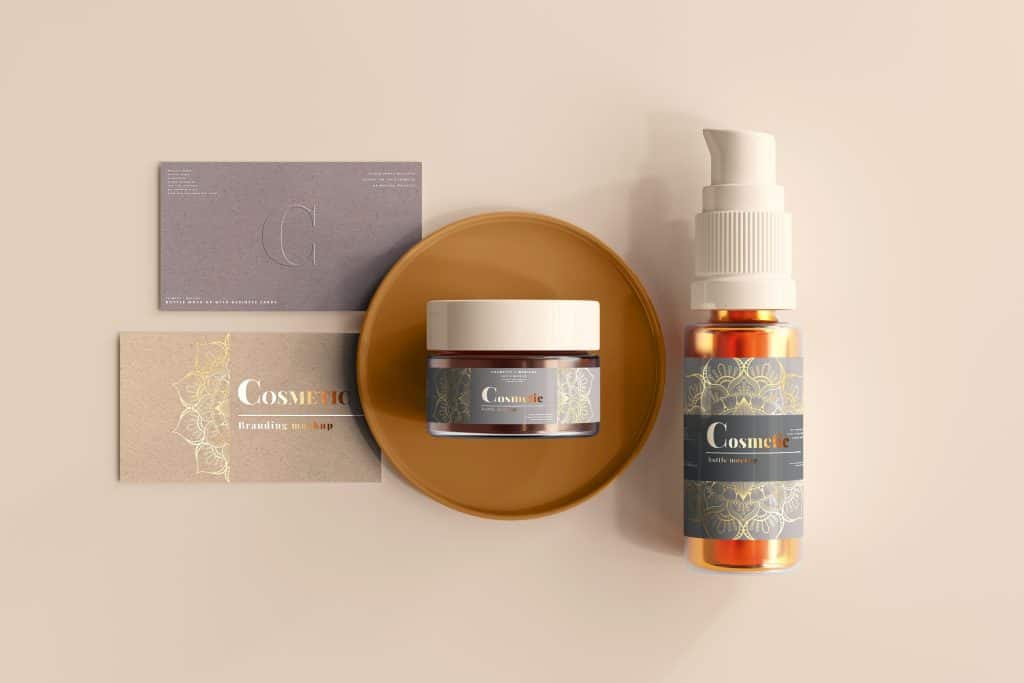Sell to a Gen X? Be Straightforward and Show Some Love

Photo by 愚木混株 cdd20 on Unsplash You want Gen X customers or clients? Take the time to understand them. To reach them, adopt two strategies: authenticity and acknowledgment. If you betray a Gen X – or fail to value Gen X patronage – a Gen Xer will turn his or her back on you, badmouth you, or pretend you don’t exist. After a Gen X experiences even the suspicion you are playing games or the hint that you don’t really care or understand, rekindling a relationship is impossible. They will, in plaid flannel and torn jeans, walk away with both middle fingers held high. Because of parental and societal treatment, Gen X, those born between 1965 and 1980, trust no one and feel forever negated. For this article, for example, I searched for images to face pictures of knee surgeries, Millennials, and Boomers. Lots of grey-haired grandparents. Models in skinny jeans. A Model T Ford. No. Wow. Members bond over these shared experiences. Authentic marketing is one key to reaching Gen Xers. You must earn trust – and continue to be honest in your product, service, offers, and customer care, to keep that trust. Add to your authentic communication indices of personalization. Recognize each Gen X customer or client as an individual – be interested in them, recognize their loyalty, notice their preferences – and you will make and continue to make the sale. Experts recognize Gen X children were abandoned (no one home, no one cared, left to their own devices) or rejected (never good enough, not right, not special, not worth it). And that treatment continues as Gen X is the ignored or forgotten generation, rejected, and abandoned as the media agenda focuses on Boomers and Millennials. Perhaps this treatment results from Gen X having less members than other generations. Gen X numbers only about 65 million people. Liberal abortion policies and birth control methods, shifting to better healthcare, resulted in Gen X having fewer members than previous – and post – generations. Experts also mark Gen X along a shorter, 16 year timeframe while most generations span 20 years. Whatever the reason, Gen Xers are not happy about it. The latchkey generation, whose Boomer and Lost Gen parents did not spare the rod or spoil the child, Gen Xers suffered unreported child abuse in a society that believed parents had the right to discipline in any way they wanted. Discipline ranged from spankings to worse – and included denial of food, imprisonment, denial of healthcare, or eviction. Over the past ten years as a personal coach, 75% of my 53 Gen X clients have disclosed experiencing physical or sexual abuse. (Yes, those seeking coaching may be more likely to be seeking help – but the percentage is still disconcerting.) At school, not only would teachers and administrators ignore or avoid issues of parental abuse and neglect, but also would characterize Gen X students along Breakfast Club lines. As character Brian Johnson says: “You see us as you want to see us, in the simplest terms with the most convenient definitions. But what we found out is that each one of us is a brain, and an athlete, and a basket case, a princess, and a criminal. Does that answer your question? Sincerely yours, the Breakfast Club.” That is the Gen X experience. They have been generalizations and characterizations as diametric opposites: dumb/smart, pretty/ugly, athletic/spaz. Worse, pedagogists of the time had only started to identify learning disabilities and autistic characteristics. No matter the intelligence, they labeled autistic Gen Xers troublemakers and discipline problems. They forced those with dyslexia into the “special” class. And no one – no one – was interested in assessing a Gen X child for mental illness. Gen X was the first to live with high divorce rates and single-parent households – and the first modern generation where both parents had to work to support a household. Alone, Gen X drowned in danger. Boomer generation parents held to the self-reliance and privacy precepts – even if you are suffering abuse. Shut up (go to your room, this conversation is for adults, don’t ask questions) and deal (take care of your siblings, you forgot your homework paper too bad, we don’t have the money for your hobbies) was the message for Gen Xers. Sex was something our free-love, hippy parents enjoyed, but was to be feared during the AIDS epidemic. Cold War tensions between the Soviet Union and the United States kept Gen Xers wondering when the bomb was coming. Gen Xers remember the gas station lines during the energy crisis – and the parental conversations when daddy was laid off, again (Gen Xers have lived through three recessions: the Dot-com bubble, the financial crisis, and the pandemic.) Financially conservative (fearful) parents and grandparents who had survived the Great Depression, along with the threat of zombies, Skynet, or alien invasion, kept Gen Xers constantly on edge. High ACE scores (adverse childhood experience measurements) resulted in Gen X having worse health than prior generations. With higher instances of alcohol and drug abuse, they also suffer more anxiety and depression. Even with their focus on and opportunities for exercise, better nutrition, and even bio hacking, Gen Xers suffer with obesity, chronic inflammation, and elevated blood pressure and cholesterol (what experts call physiological dysregulation). Gen X also is the first generation in history to not do better economically than their parents. Many Gen X have filed bankruptcy, lost their homes – and almost 40% have more debt than savings! We cringe at every commercial on cable and paid television: I subscribed to avoid commercials! Why am I still paying? College costs skyrocketed for Gen Xers. Where mom and dad paid out of pocket for higher education, Gen X was burdened with mortgage-sized college loans. Speaking of mortgages: Boomers purchased a first home for what Gen X paid for their first clunker cars. Many Gen Xers entered the job market during or after the recession – forcing Gen X
Color Your World

Notice what colors others choose. What does that person communicate when he or she chooses clothing or decorating colors? What does the logo’s color say?
Stand Out in Your Market: 12 Sweet Branding Trends

Photo by Dollar Gill on Unsplash If I see another boxy advert, without movement or life, I will scream. Sure, if you have a super-conservative brand (think bank, investment firm, attorney, auditor…), and you want to SCREAM “tradition, we never change, steady as a rock, fun-police,” then it’s your role to be dull blue-suit no personality. For the rest of us, attracting live clients and customers is an exciting challenge. So, step up and look at this year’s brand trends: Example: You are about to release your summer recipes. Try a poll: What’s your favorite summer dessert? We’ll feature the winner on the book’s cover! Best in Class: Heineken’s Go Places interview to learn about their applicants. You can take the interview here. 2. Daring Nostalgia. Incorporating bubble-gum colors (blah), neon and chunky fonts, mascots like Mr. Peanut, and psychedelia are in. Think 50s, 60s, 70s and 80s. Reference yesteryear and earn points. Example: Show a video of photo developing next to a video showing image editing. Talk about the possibilities. Best in Class: Adobe’s love of Bob Ross. 3. Powerful Use of Color. Impactful, clashing, and contrasting tones (like my brand colors) will stand out. The goal is to boost instant recognition. Example: You may not want to rebrand and change your company colors, but you can incorporate powerful colors in your advertising. Best in Class: Pantone’s Viva Megenta. 4. Anti-design. Return to the 90s, mix things up — break design rules with blended font families, misplaced pixels, and overlaid visuals. Think grunge, rave, and controversy. Best in Class: Too many to mention! 5. New Eco. We want to protect the planet. But we are setting aside the green and brown go-to and focusing on minimalistic design. Think elegant and understated. Recycled packaging. The vital point: Your product must be eco-friendly or your branding will fail. Best in Class: The Body Shop Example: Consider eco branding for personal care products, clothing, food, and gardening businesses. Stress your recyclable packaging! 6. Animated Logos. Think the Google “G.” Video has long topped still images. The same is applying to logography. Think liquid and alive. You can find programs online, like Canva, to help you animate your current logo for digital use. Best in Class: Lots of examples from 99 Designs. 7. Statement Typography. Mismatched fonts, motion effects, and odd placement are key. 3D typography and san serifs are alive and well. For inspiration, peruse these fonts from Juke Box Print. 8. Humanized Brands. Along the authenticity train track, get raw, honest, and candid tone. Speak true. Be honest. This trend directly connects with customer and client values and is a key to relationship creation and maintenance. But you don’t need to change your brand strategy! A shift in your approach in your advertising and on social media can show your human side. A simple behind-the-scenes video or photos from the company picnic can do the trick! 9. Humor & Satire. A direct route to humanizing one’s brand, the use of humor and satire builds authentic conversation and relatability. Best in Show: Dollar Shave Club and Dissolves Generic Millennial Ad. 10. User-Generated Content. Invite your customers and clients to post their experiences–visually and verbally. Not only does this build connection through a conversation, but also intensifies loyalty. Your customer becomes part of the plan. Example: Work with your web designer or social media manager to incorporate an interactive platform. Encourage customers or clients to respond to questions or enter contests with images and video. Amazon has mastered this tool by encouraging customers to post images of purchased products, no matter the experience! 11. Mission First Branding. Akin to eco-branding and humanized branding, mission first branding uses company values throughout all efforts. Example: You have donated a portion of your profits to animal shelters for twenty years. Let your customers know! Use a puppy mascot — tell how you helped. Just ensure you aligned your effort with your brand (don’t boast you are eco-friendly and dump chemicals in the nearest river!) Example: A photographer friend specializes in professional headshots and school photography. For teacher’s day, she provides free headshots. She discounts birthday sessions for students. She offers sessions at the library on reading days — family and education friendly! 12. Retro Collage. Tare the edges. Randomize your images. Mix your media. Chanel is embracing this trend, so I guess it appeals. Get some stickers. Here are some great ideas to inspire you. I’m not a big fan. But I also refuse to scrapbook no matter who invites me to one of those scrapbooking groups. Which leads me to my last point and characteristic reflective, possibly disregarding, opinion: Trends are fun–but if you cannot incorporate a trend effectively into your brand identity or marketing plan, skip it.
Successful Entrepreneurs Know: Brand Before Business – or Bust!

Photo by pmv chamara on Unsplash You had so much energy and joie de vivre when you launched your business. This morning, you surf the classifieds to find a j.o.b.. The wind is gone; your sails are flaccid. You had a good idea. You gave it the college try. Wait. As a business coach and content expert, I’m going to ask you the right question: What is your brand identity? Huh? You heard me. You know what product or products you’re hawking. Or what services you provide. You set up the website. Got the fancy digital business card. Paid Mark Zuckerberg for social media posts. You did SEO. You did everything right. And most importantly, you are an expert in your field. Or your product is beautiful, useful, fabulous. You should be a billionaire by now. Nope. You know why? Because you didn’t work on your brand identity first. Rush to Failure I’ve been an entrepreneur for over thirty years, have six successful ventures behind me, and three operating now. I have coached hundreds of entrepreneurs. Almost every new business rushes to the market without knowing the market and how they fit in the market! This is a simple matter. Basic communication. The meaning of any communication – marketing included – rests with the person listening. Not with you. Not with the business. But with the consumer. So, you must learn to talk to that person in a way that person expects and wants. And they have to want to listen to you. Don’t bother printing business cards or paying for a year of website hosting until you know who you are, who your customers are, and who you need to be to engage those customers in conversation. Marketing gurus call this step: Branding. What is Branding? Branding is the communication choices that you make to represent your brand. Your brand is the personality you choose to connect effectively with your audience’s values, attitudes, and emotions. Branding differentiates you from competitors, nurtures recognition, enhances value and customer relationships, and ensures create cohesion. Which company would associate with this image: Disney or Harley Davidson? (Open Source Image from WebstockReview.net) That’s obvious. Sure. But every company strives – or should strive – for those powerful associations. You know who they are – and you know, as a consumer, if you like it, want to be associated with it, or want to buy from them. Some of this, you already know – but you were so excited to make money that you jumped and figured you would do all that branding stuff later. Whoops. No worries. Spilt milk and more cliches. We’re human. You can fix this! In 2016, I started my photography side-hustle. For a while, clients dripped in through referrals… but I wanted the business to be more than a side-hustle. So, I launched a website, created business cards, blah, blah. And nothing. Crickets. More cliches. Ready? Physician heal thyself. I know Branding Before Business. I’ve advised every client to do just that. But I rushed to market and failed. No matter the industry, branding is the key to business success. Every business needs a brand identity: the design elements, word choice, color scheme – even the business name – to attract the target consumer. Branding includes personal branding, corporate branding, product or service branding… Every communication that originates from your business should be cohesive to that brand choice. Your business has seven seconds to make that first impression. To stand out in the crowd. To capture your target customer or client. Or that consumer will swipe and forget you. You must ensure you are speaking your special person’s language. Just like you are about to do, I grew my business with solid branding. What to Do? Branding takes effort – which is why most budding entrepreneurs skip it. Consider simple communication: You have to craft what you say to help the listener understand you. If you use slang with grandma, she’ll frown. If you use formal language with friends, they’ll laugh at you. It’s not… another cliche… rocket science. But it is vital. Step 1: Be Authentic You need to know who you are and what values you hold. I don’t state that lightly. What’s your personal brand? Are you a person of integrity? Are you fun? Are you serious? Are you down-to-earth or posh? What are your priorities? What needs are important to you? When branding my photography business, I took a weekend and seriously examined who I am as an artist. My photos are not light and bright. I prefer action and capturing candid moments. I detest canned, cute poses. Detest. I’m edgy. Honest. Raw. Realizing this bothered me. All the other local photographers were light and bright and had these cute, pretty images. They were making money. I was scared. But I forged ahead. I can’t be cute and soft. It’s not me. And selling it would be impossible for me. List your values. Note your attitudes on social topics. Make a list of brands you admire – and consider why you admire them. Step 2: Identify Your Customer or Client Persona Who’s buying your product or choosing your service? This is an important step. Once you have clearly defined your product or service, answer these questions: Here’s my abridged client profile: My ideal client is a male or female GenX who enjoys being different. They listen to alternative music. They don’t have that 9-5 corporate job. They like adventure and take risks. They are entrepreneurs or have side-hustles. Top middle class. Very authentic. Anti-establishment. They rage against authority and don’t vote the party ticket. They are self-educated or traditionally educated but know a degree is what you do with it (cognitively complex). They are self-sufficient and self-made. They care about personal freedom. They don’t care about social media unless it’s memes or satire. They enjoy life and choose excitement over the popular. They respect authenticity and honesty. They buy lingerie and sex toys, sports equipment, motorcycles, have high
Make Your Customers Cry, Shiver, or Laugh – Or Lose Them

Photo by Tengyart on Unsplash We’ve all seen the American Society for the Prevention of Cruelty to Animals (ASPCA) End Animal Cruelty commercial, starring Sarah McLachlan and her song Angel. The commercial, an example of an emotional appeal to trigger the cognitive bias of an identifiable victim, haunts us with images of shivering, starving, abandoned kittens and puppies. Most of us change the channel to avoid the pain. (I can’t watch it. I’ll cry for an hour!) But most of us donate to stop the pain. Because emotional appeals are a highly effective marketing approach. Emotional appeals (aka appeals to emotion) are a route to appeal to pathos. Aristotle insisted persuasion must use data from a credible source (ethos), a powerful argument (logos), and emotional appeal (pathos). We are humans, after all, and we have to care to be motivated to change our mind or behavior. But strict emotional appeals avoid facts and data and rely upon triggering an emotional response in the receiver. Emotional appeals force the receiver to use emotional or affect processing (as opposed to central or cognitive processing). For most consumers, marketers rely on emotional appeals as a more effective form of persuasion. Cognitive processing (logic) takes time, high interest, basic knowledge, and significant energy to think through the persuasive message. Most receivers do not have: (a) the cognitive ability to process complex messages; (b) the time to process (why time pressure is an effective sales approach); (c) the energy to process (I don’t care, I just want that car!); or (d) basic knowledge to process additional, complex data. Marketers can (and do) take advantage of this human foible using emotional – or motivational – appeals. To help you sell your widget, I’d like to share the science behind reaching your customers’ hearts. Motivational Appeals Emotional appeals include appeals to: happiness and joy, sadness and grief, humor, tradition, pride, connection, anger and outrage, compassion, adventure, popularity, sex and romance, lifestyle and status (including association), youth and appearance, and fear. Motivational appeals stimulate consumers’ internal incentives – their values, beliefs and attitudes – and their external incentives – through social proof, societal standards, and tribe expectations (others are doing it). The consumer does not buy or engage you for service because he or she thinks doing so makes sense. He or she does it because everyone else is. Because you share their emotional experience. And considering marketing is becoming increasingly emotional and connection-based, you can set aside the product is better logic for the product makes you feel approach. Consider if the ASPCA had no starving puppy video and only a guy in a suit who says, We need 1.5 million dollars to purchase food, to obtain medical care, and to re-home abandoned and abused animals. If you give us $30, you can save an animal. Yawn. The Sarah McLachlan masterpiece raised 30 million dollars in the first two years. Appeals In Action Joy: Coca-Cola received over 100,000 positive letters praising their “I’d Like to Buy the World a Coke.” Anger or Outrage: The Run Like A Girl commercial from Always redefined like-a-girl into a positive affirmation. Appearance: Dove’s Beauty Sketches helped women reconsider self-perception. Sadness or Grief: Chevy’s Maddie commercial subtly shows their vehicles last a lifetime. I’m sure your mind is listing commercial after commercial where you had an emotional reaction. There is nothing inherently unethical with marketing and advertising appealing to emotion. Ethical implications occur when the company behind the feelings offers nothing but those feelings – manipulating consumers or avoiding facts and figures. The trend is to do exactly that. Therefore, when using emotional appeals, use them ethically. Don’t manipulate your customer or client into choosing you or yours. Ethically use emotional appeals alongside logic, facts, and reasons for buying from you or using your service. Fear Appeals: An Example Fear appeals are a subset of emotional appeals. Fear appeals are only effective if the receiver knows (a) she has or is at risk of a serious problem to be solved; (b) believes she can solve the problem (is not hopeless or guilt-ridden); (c) is offered a viable solution (believes the solution will work); and (d) believes she can implement that solution. If a non-smoker sees a smoking cessation ad, she doesn’t feel at risk and ignores the appeal. If a smoker sees the ad, but thinks smoking is helpful, she will negate the ad as a non-problem. If the smoker who sees the ad feels like nothing works to help her quit, she will ignore the ad (and, in fact, the appeal will backfire). If she is engaged but thinks the solution won’t work, or won’t work for her, the appeal will fail. Fear appeals can trigger too much fear where the receiver feels hopeless or so fearful, it causes the “freeze” or “flee” (avoidance) responses. So, fear we must carefully craft a fear appeal to ensure a balance between triggering enough fear while still ensuring the receiver feels empowered. One of the most successful fear campaigns was the CDCs “tips from smokers” series–with people who were suffering from lung and throat cancer. How can you use a fear appeal in your own marketing? You get the idea! Now, it’s your turn. What emotional appeals match your product or service? How can you incorporate appeal to emotion in your marketing?
Epimetheus and Janus

A stable orbit desired.